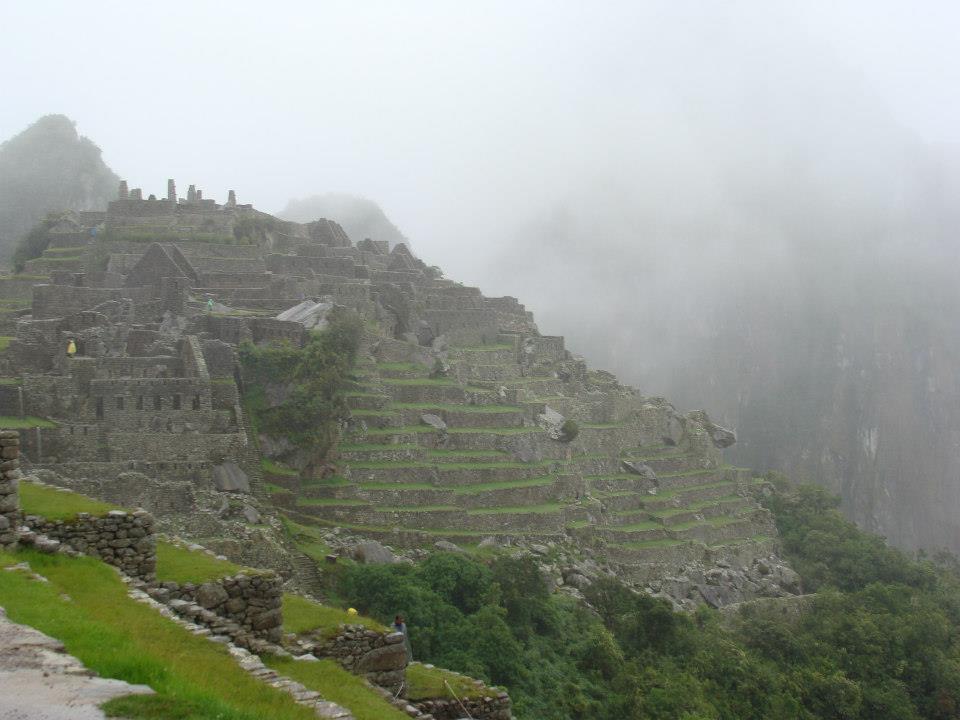Have you ever felt so blessed that
you just cannot stop smiling? This week I have had so many of those moments; I
have un sinfín (an endless amount; literally “without end”) to be
grateful for.
As I view relationships to be at
the core of humanity, I give thanks for the many beautiful conversations I’ve
had with some very special people this week—Americans, Peruvians,
Internationals, friends and family. God has blessed me with some amazing people
in my life.
Moreover, I was able to get all of
the classes I wanted despite the disorganized system. We arrived at the school
at 6:20am to get a favorable spot in line for the first-come first-serve
matriculation process. After an hour of waiting, we received a number. And
after another 2 hours of waiting, we were herded into waiting rooms where we
waited at least another hour. With everyone stressed about the possibility of
there not being enough space in the classes they wanted to register for, the
anxiety increased when the organizers essentially nullified the number system
by calling people to register based upon faculty (or specialty school) instead
of by their number. I was lucky that my classes still had space by the time I
arrived at the front of the line, but many others were not as fortunate.
Breathing easily now, I can smile at that gift.
Another happiness was this weekend!
Time was well spent with our Peruvian architect friends, eating dinner with
them and laughing until our faces hurt. Also, Friday night was “El Clásico,”
the rival game between Peru and its arch-nemesis Chile, which every Peruvian
told me that we were going to lose because that always happens. Nonetheless,
the country was glued to the game, rooting for not only for its team to win a
soccer match, but also hoping for the glory of defeating its most hated rival.
And to everyone’s surprise and great happiness, Peru won! What a celebration!
The next evening I went to a fiesta
thrown by our Mexican friends for many of us international students. They
grilled and prepared Mexican food for us, taught us their party traditions, and
introduced us to their style of dancing. To keep the fun going, we went to a discoteca
by the beach to dance through the night. Since I and many others had only
planned on going to the cook-out, we were dressed very casually in comparison
to the long line of Peruvians in their nice suits, dresses, and high heels
waiting outside the club. I thought there was no way they would let us in
because discotecas here often require a minimum level of dressiness. But
one of the people in our group had a connection at the club, so we said his
name, bypassed the line completely, and went into the club way underdressed. It
felt like something in a movie. And then we danced! ¡Hola salsa!
Swirling lights, swirling songs, swirling bodies. So much fun!
After the weekend fun, I have been
trying to finally get more settled now that I have a fixed class schedule. Part
of the fun of being at a different university is seeking out a niche, that
corner of campus where you can think and read and study without distraction,
that little place you make your home during the day. I still haven’t found my
definite niche yet, but I have some ideas. Here are some photos of campus, a
well-groomed oasis amid a noisy city.
 |
| The main entrance, as seen from inside the university |
 |
| The chapel on campus |
 |
| The view from the top of my faculty; partly campus, partly Lima, mountains in the background. |
 |
| The courtyard of my main facutly, "Letras y Ciencias Humanas" |
 |
| Un "Bambi" |
 |
| This building is the"Tinkuy," which means "to get together" in Quechua. A possible niche... |
 |
| "The poetry of the earth is never dead." ~John Keats A beautiful sunset for students to admire |

































